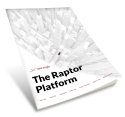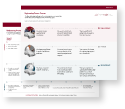At New Eagle, we begin every project with information-gathering. From there, our engineers methodically work through a four-phase process to ensure project success. The four phases are:
- 1: System Definition
- 2: Prototype
- 3: Reproducibility
- 4: Production
This article is going to focus on Phase 1: System Definition – the foundation of the successful project.
What does “System Definition” mean to us?
In the System Definition phase, we define the parameters of the proposed system. This means working out its basic architecture, defining validation requirements, and getting a sense of the anticipated volume.
By creating a system architecture that specifies how things will work conceptually, we’re able to define system-level requirements. Once these are clear, we can delineate and delegate program responsibilities, so each member of our team understands their role.
What do clients receive in Phase 1: System Definition?
At the end of Phase I, our engineers have developed several deliverables that are shared with clients. Each deliverable helps the client understand the system’s architecture as well as the timeline and budget.
System Architecture
The System Architecture specifies the system components and their respective interactions. Clients receive drawings of the various components like body or powertrain controls. These drawings make it easy to visualize the connection between the steering wheel, for example, and the Power Steering Controller which reads the steering wheel and makes steering decisions.
Design Specifications
The Design Specifications provide design performance targets, assist tuning efforts, and act as a validation checklist. Clients receive vehicle information and performance targets in a detailed spreadsheet where each item is organized by system (e.g., total vehicle, brakes, tires, battery). In addition to dimensions like overall vehicle length, roof height, and mass, clients can review details on charge sustainability and depletion.
Component Selection
The Component Selection details the Bill of Materials (BOM) that will be used in future phases and identifies sourcing for the component parts. The BOM also provides the basis for the Engineering and Component Budget. It lists the components for each vehicle part alongside quantity and estimated unit cost, so clients have a clear sense of the project budget.
Project Plan
The Project Plan is where clients see the project begin to take shape. It defines the schedule, milestones, and necessary resources to create a vehicle. The plan outlines major assignments, determines the critical path to completion, and assigns each task to members of the team.
When applicable, project plans include ISO 26262 (the international standard for electrical systems in road vehicles) and/or design failure mode and effect analysis (DFMEA) templates.
Conclusion
In Phase 1, our engineers are focused on planning. Phase 2 – concept validation and prototype-building – is where the real action starts.




